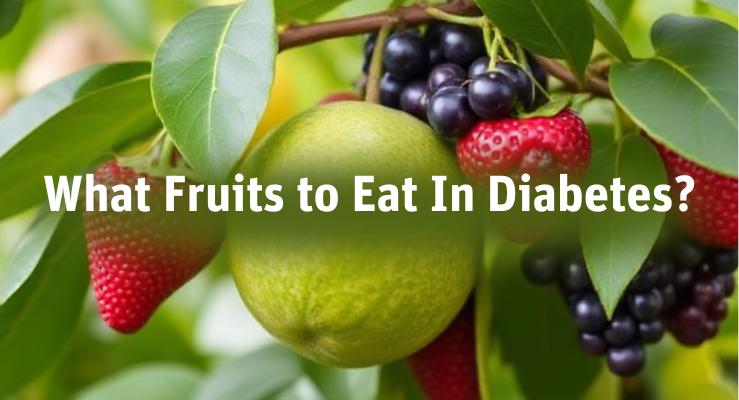
What Fruits to Eat If You Have Diabetes
Share
For those managing diabetes, selecting the right foods is paramount, especially when it comes to fruit. Despite their natural sugar content, fruits are an essential part of a healthy diet, providing vitamins, minerals, and fibers that benefit overall health and help manage diabetes. Here's a deeper look into how to incorporate fruits into a diabetic diet responsibly.
Understanding Diabetes and Fruit Consumption
When living with diabetes, monitoring blood sugar levels is crucial. The sugars present in fruits, primarily fructose and glucose, can impact these levels, but this doesn't mean fruits are off-limits. The key is understanding the glycemic index (GI), a system that ranks food based on the speed at which they raise blood glucose levels. Fruits with a lower GI are absorbed more slowly, thus preventing rapid spikes in blood sugar.
Additionally, the fiber in fruits plays a significant role in diabetic diets. Fiber slows the absorption of sugar into the bloodstream, helps maintain a feeling of fullness, and aids in digestion, which can lead to improved blood sugar control over time. For example, an apple with its skin on offers around 4 grams of fiber, which can help mitigate the faster sugar absorption compared to drinking apple juice, which contains little to no fiber.
Fruits That Are Safe for People with Diabetes
Selecting low-GI fruits that have minimal impact on blood sugar levels is vital for diabetes management. Here are some fruits particularly well-suited for those with diabetes:
● Berries: Such as strawberries, blueberries, and blackberries, are excellent choices due to their low GI and high fiber content. They're also packed with antioxidants, which play a role in reducing inflammation and overall health protection.
● Citrus Fruits: Including oranges and grapefruits, these fruits are high in vitamin C and dietary fiber, yet they have a moderate impact on blood sugar levels. They can be a refreshing part of the diet without the worry of significant glucose spikes.
● Apples and Pears: Both fruits, when eaten with their peels, provide substantial amounts of fiber that helps to slow glucose absorption. They are versatile, can be used in numerous recipes, and have a moderate glycemic index.
● Stone Fruits: Peaches, nectarines, and apricots offer a sweet taste and are rich in vitamins and fiber. They have lower glycemic indices and can be included in a balanced diabetic meal plan.
● Kiwi and Papaya: These fruits are not only flavorful but also low in GI and high in fiber. Kiwi, for instance, provides a substantial amount of vitamin C and vitamin K, essential for overall health.
Low Glycemic Index (GI) Fruits for Better Blood Sugar Control
Incorporating fruits with a low GI is beneficial for managing blood sugar levels effectively. Besides the fruits listed above, here are other low-GI options:
● Cherries: Cherries have a GI of 20, making them one of the best fruits for managing blood sugar. They are also high in antioxidants, which help fight oxidative stress.
● Dried Apricots: These are an excellent snack option, especially when fresh fruit isn't available. They have a lower GI and are packed with nutrients, although it's crucial to eat them in moderation due to their concentrated sugar content.
● Pears: Especially when eaten with their skin, pears are effective in managing blood sugar due to their high fiber content. They can be a part of a healthy snack or a balanced meal.
Portion Sizes: How Much Fruit Can You Eat with Diabetes?
It's important not to overlook the quantity of fruit consumed. Proper portion control is essential in managing blood sugar levels. A typical fruit serving should have about 15 grams of carbohydrates. For example:
● One small apple or half a large apple provides around 15 grams of carbohydrates.
● A cup of sliced strawberries or two small plums would also fit this carbohydrate count.
● A medium peach or half a cup of fresh cherries matches this guideline too.
These portion recommendations ensure that fruits can be enjoyed as part of a balanced diet without leading to significant blood sugar spikes.
Tips for Including Fruits in a Diabetic-Friendly Diet
Incorporating fruits into a diabetic diet can be done effectively with mindful strategies that maximize nutritional benefits while minimizing blood sugar impacts:
● Combine fruits with proteins or healthy fats: This strategy helps mitigate the impact on blood sugar levels. For instance, pairing apple slices with almond butter offers a satisfying snack that combines healthy fats, protein, and fiber.
● Choose whole fruits over juices: Juices lack the fiber of whole fruits and can cause more rapid increases in blood sugar. Eating whole fruits ensures you get the maximum fiber benefits, which helps regulate blood sugar.
● Spread fruit intake throughout the day: Consuming fruits at different times can help avoid blood sugar spikes and dips. This approach also aids in better overall glucose management throughout the day.
● Monitor individual responses: Keep track of how different fruits affect your blood sugar levels. Everyone's body reacts differently, and what works for one person may not work for another. Monitoring can help personalize your fruit choices to better suit your individual health needs.
Understanding how to select and incorporate fruits into your diet is essential for maintaining stable blood sugar levels and enjoying a diverse and nutritious diet. With the right choices, fruits can remain a delicious and beneficial part of a diabetes management
